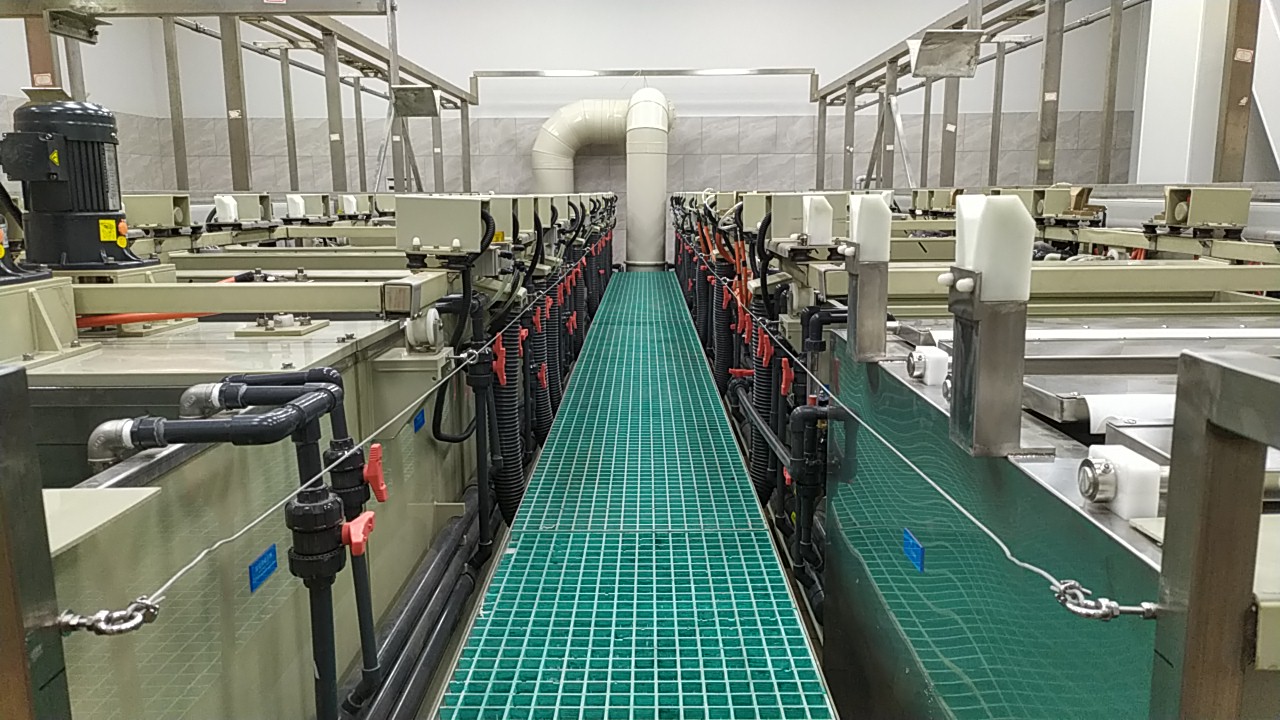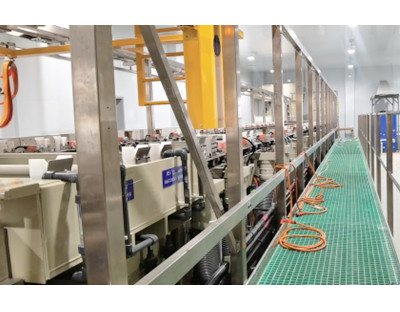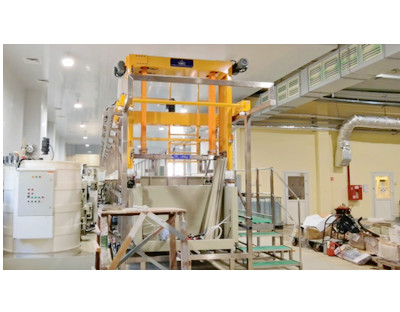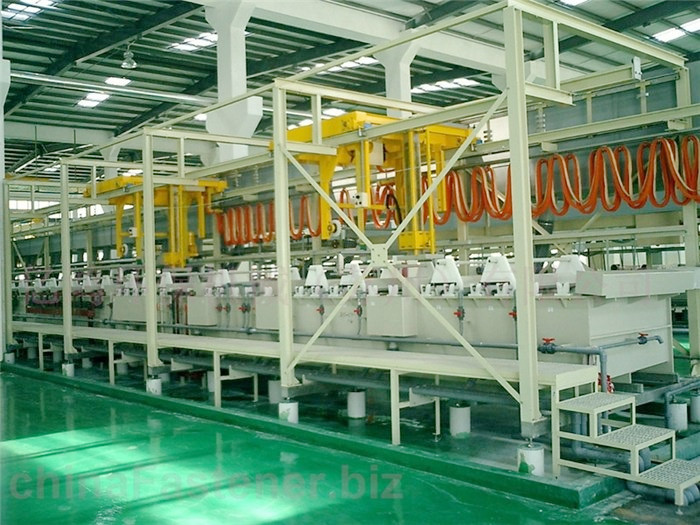(1) Characteristics of Circular Electroplating Automatic Line
The characteristic of the circular electroplating automatic line is that each process slot is in a load state during the production process, resulting in high efficiency. It is suitable for producing products with large batches and mature processes. However, the mechanical structure is complex, the investment is high, and it is difficult to change the process. Each hanging device on the circular automatic line is a rhythm, moving a certain distance, lifting at a fixed point, and the plated parts are carried forward in sequence. Therefore, the layout of the plating tank is completely arranged in a U-shaped arrangement according to the process flow design.
In the circular automatic line, the layout and length of the plating tank are determined according to the process specifications, that is, the process sequence and processing time are determined first before the installation of the circular automatic line can be arranged. To change the process, it is necessary to modify the plating tank and components, which is quite complex and difficult. Therefore, once the process is determined, it cannot be easily modified.
(2) Transmission of circular automatic lines
The circular automatic line lifting and mooring cylinder is responsible for lifting and lowering the hanging equipment, horizontally advancing, and the oil cylinder is responsible for the horizontal and fixed distance movement of the hanging equipment. The synchronous oil cylinder ensures that the lifting oil cylinder rises and falls synchronously, and the lifting frame also rises and falls simultaneously. The synchronous oil cylinder is installed on the oil pump platform, the horizontal oil cylinder is installed on the framework of the automatic line, and the lifting oil cylinder is a three-layer sleeve type oil cylinder. The inner and outer sleeves do not move, and the middle sleeve is the piston. Although this structure has high manufacturing requirements, it can reduce the amount of working oil and, more importantly, ensure good piston rigidity. The end stations of each process slot are empty for the preparation of hanging tools and workpieces before crossing the slot. The hanging tools only have lifting and crossing actions at the first and last stations of entering and exiting the slot.
The action sequence of the claw is that when the frame rises to a high place, the claw falls (with the action of the rotation mechanism in the horizontal cylinder), and the several hanging tools that cross the slot are moved. When the frame is lowered, the horizontal cylinder moves twice, and what is being moved is the workpiece being processed in the slot. The claws on the hanging tools that have crossed the slot will automatically lift and do not have a pulling effect. Therefore, when the frame rises, it moves horizontally once, and when it descends, it moves horizontally again. This loop action completes a beat.
Nowadays, there are many circular automatic lines that commonly use bridge lifting hydraulic transmission mechanisms. The advantages of hydraulic transmission are relatively stable and simple structure, but the disadvantage is the problem of oil leakage, which needs to be improved.






 Mar. 07, 2022
Mar. 07, 2022 





